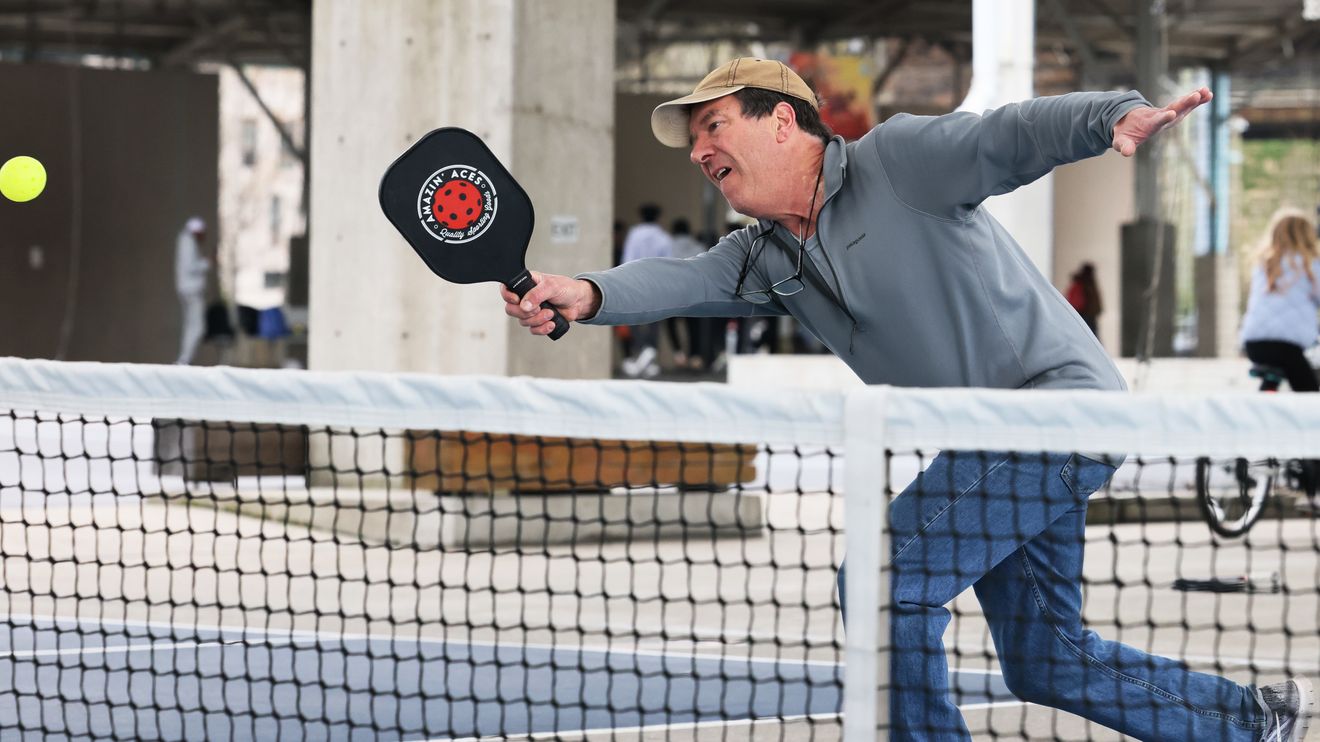As pickleball surges in popularity, so do the costs for treating injured players — to the tune of $377 million this year alone in the U.S., according to a new analyst estimate from UBS
UBS,
But it doesn’t have to be this way, says Dr. Sanjay Saint, co-author of “Pickleball for Life: Prevent Injury, Play Your Best, & Enjoy the Game” (Michigan Publishing Services, 2023).
The UBS report has generated lots of buzz, which is perhaps no surprise given that pickleball, a game that shares elements of tennis, ping-pong and badminton, is often described as the fastest-growing sport in the country. Nearly 9 million Americans are now playing the game, the Sports & Fitness Industry Association reports — an astounding year-over-year increase of 85.7%.
But the increase in medical costs is even more dramatic: The UBS report says the $377 million figure represents a 156% spike over the previous year.
Saint, a professor of internal medicine at the University of Michigan and chief of medicine at the VA Ann Arbor Healthcare System, is a self-described pickleball addict who’s no stranger to being injured. He says his playing has resulted in numerous medical problems, from pulled calf and groin muscles to plantar fasciitis, an inflammation of the band of tissue at the bottom of the foot.
MarketWatch spoke with Saint on Tuesday to get his reaction to the UBS report and see what he advises when it comes to staying safe on the pickleball court.
Why are so many players getting injured?
Saint says he isn’t the least bit surprised by the UBS report’s findings. As he explains, part of the issue is that pickleball is a relatively accessible sport, which in turn means it attracts older players who may be more prone to injury. (The UBS report notes that 86% of pickleball-related emergency-room visits are among those age 60 and up.)
The other problem is how the game is played: While it’s a low-impact sport that is generally perceived as being not too taxing, it will require sudden bursts of energy — say, to chase a ball that’s landed close to the net. “That’s when you see lots of injuries occur,” Saint says. In effect, players think they can tackle what they often can’t. “Our minds think like we’re teenagers,” Saint adds.
What type of injuries are we talking about?
As Saint’s own experience attests, lots of different things can happen. In particular, strains of the hamstring, lower back and Achilles tendon are common, Saint says. And a tear of the Achilles tendon is really bad news, Saint says: “That’s like a nine-month rehab.”
But another biggie is wrist-related injuries — strains, broken bones, etc. — from players trying to break a fall using their hands. Saint says they’re termed FOOSH injuries, as in Fall Onto an OutStretched Hand. Indeed, the UBS report says the wrist is the number-one body part injured in pickleball, accounting for 13.2% of problems.
Don’t forget pickleball elbow, either, Saint says. It’s like tennis elbow, only it’s experienced by, well, pickleballers.
So, what can players do to avoid injury?
It’s all about stretching and staying limber. He advocates that players have a daily routine of stretching and aerobics — mornings are especially good for this — but they should also stretch for up to 15 minutes immediately before starting a pickleball session. He provides videos of different stretching routines via YouTube
GOOGL,
What if you arrive on the court without time to stretch?
It’s inevitable that sometimes you’ll be in a rush to get to your pickleball match. Saint says it’s still best to squeeze in at least a couple minutes of stretching before playing. But failing the ability to do that, he advocates taking it slowly for the first game or two. “Instead of giving it 100%, give it 70%,” he says. In effect, those games become a form of stretching.
Do you need any special footwear? Any other gear or materials?
Saint strongly advises that you use sneakers designed for playing court sports, such as tennis. He explains that they’re especially good at providing support when you’re moving from side to side, which is very much part of pickleball.
And if you’re playing outdoors, sunscreen is a must — Saint uses one with at least an SPF rating of 50 — as well as a decent-sized hat. “If they’re not laughing at your hat, it’s not big enough,” he says.
When should you seek medical attention for a pickleball injury?
If you can’t put any weight on the part that’s injured, that’s a sign you need to seek immediate medical care, such as in an emergency room or urgent-care facility, Saint says. That’s because you’re likely looking at a tear or rupture.
But if your symptoms are less severe, Saint says you can rest for two or three days and try icing to reduce any inflammation of an aching body part. And while it’s tempting to reach for pain relievers, such as Ibuprofen, Saint advises caution since there can be complications from using those. If symptoms don’t improve after two or three days and your discomfort is at a level of about five or higher on a 1-10 scale, Saint says it’s worth reaching out to your medical provider.
And what should you do if you’re sidelined by a pickleball injury?
Listen to what your doctor says and don’t rush back to the court, even if it means a long rehab time, Saint says. Admittedly, that can be frustrating since pickleball is very much a game built around camaraderie — and many pickleballers have an entire social network connected to the sport. But if that’s the case, Saint says, just show up and cheer your fellow pickleballers on — you can maintain the connections without playing.
Read the full article here


